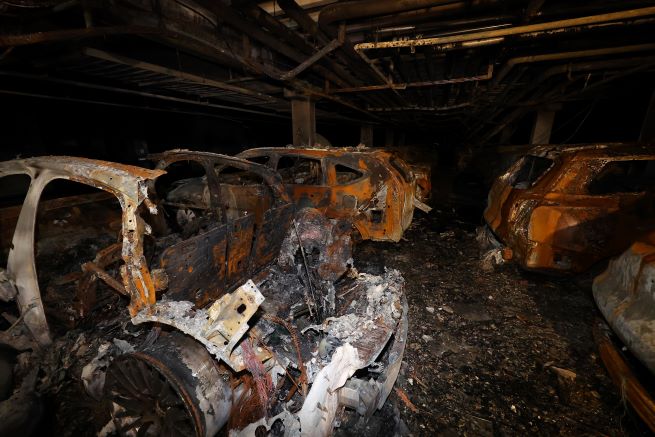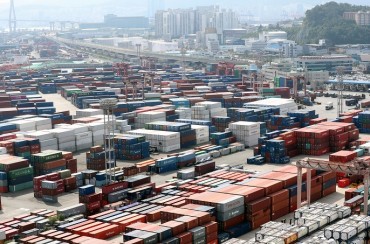
This Aug. 2, 2024, file photo shows a parking garage along with vehicles damaged by an apartment complex fire that began from a Mercedes-Benz electric vehicle in Incheon, west of Seoul. (Image courtesy of Yonhap)
SEOUL, Nov. 25 (Korea Bizwire) – Following the devastating Mercedes-Benz EQE fire in an Incheon apartment complex parking garage last August, which damaged approximately 800 vehicles, concerns about rising auto insurance premiums have become reality, even as traffic accidents and fatalities decline.
According to the Korea Automobile Citizens’ Association, traffic fatalities have dropped by half, from 5,092 in 2013 to 2,551 last year, due to improved road safety measures, better compliance with traffic laws, and advanced vehicle technology. However, insurance premiums are paradoxically facing upward pressure.
The primary factor driving this trend is the surge in luxury imported vehicles and electric cars, which incur significantly higher repair and parts costs.
Insurance research shows that imported car repair costs are 2.6 times higher than domestic vehicles, while parts are 3.7 times more expensive. Electric vehicles generate 1.87 times more damage claims per incident than conventional vehicles.
The rise in high-end vehicles is substantial. According to the Korea Automobile Importers and Distributors Association (KAIDA), registrations of imported cars priced over 100 million won increased from 43,158 units (15.7% market share) in 2020 to 78,208 units (28.8%) in 2023.
Even with recent declines due to new business vehicle registration rules and economic downturn, luxury imports still account for more than one in five new car registrations.
This trend has led to changes in property damage liability insurance coverage. While coverage limits of 20-50 million won were standard 20 years ago, 37.5% of policyholders now opt for 1 billion won coverage, with insurance companies recently introducing 2 billion won options following the Incheon EQE fire incident.
The Korea Automobile Citizens’ Association argues that the current system unfairly distributes costs across all policyholders. They advocate for a more equitable approach, similar to models used in the United States, France, and the UK, where high-risk drivers pay higher premiums based on driving habits and risk factors.
The organization recently submitted a proposal to the Financial Supervisory Service calling for transparent and rational premium calculations.
“If increased costs from high-risk groups are the main cause of rising loss ratios, it’s only fair to introduce special riders or separate rate structures for these groups,” said Lim Ki-sang, head of the Korea Automobile Citizens’ Association, emphasizing that the current system unfairly burdens safe drivers with costs generated by high-risk drivers.
Kevin Lee (kevinlee@koreabizwire.com)






